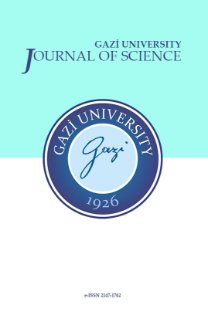An Ergonomic Investigation of Working Environment with Kano Model and Universal Design Principles
An Ergonomic Investigation of Working Environment with Kano Model and Universal Design Principles
___
- Akyüz, K. C., Balaban, Y., Yıldırım, İ.,“Orman Endüstri Mühendisliği Bölümü Öğrencilerinin Gereksinimlerinin Kano Modeli Yardımıyla Sınıflandırılması”, Kastamonu Üniversitesi Orman Fakültesi Dergisi, 13(2): 258-267, (2013).
- Uca, M., Menteş, S., “İşletme Bölümü Öğrencilerinin Bölüm Gereksinimlerinin Kano Modeli İle Siniflandirilmasi: Dokuz Eylül Üniversitesi, İşletme Fakültesi Uygulamasi”, Dokuz Eylül Üniversitesi İşletme Fakültesi Dergisi, 9(1), (2008).
- Sofyalioğlu, Ç., Tunail, İ., “Kano Modelinin Kalite Fonksiyon Göçerimi Planlama Matrisinde Kullanımı”, Ege Academic Review, 12(1), (2012).
- Shahin, A., Zairi, M., “Kano model: A dynamic approach for classifying and prioritising requirements of airline travellers with three case studies on international airlines”, Total Quality Management & Business Excellence, 20(9):1003-1028, (2009).
- Books, G. J., Klemm, K., “A unique approach to preventing back pain in the dental office”, Work (Reading, Mass.), 42(2): 299-306, (2011).
- Kırzıoğlu, Z., Yetiş, A., “Diş hekimliği kliniklerinde ergonomik düzenlemeler”, Atatürk Üniversitesi Diş Hekimliği Fakültesi Dergisi, (3), (2013).
- Gravina, N., Lindstrom-Hazel, D., Austin, J., “The effects of workstation changes and behavioral interventions on safe typing postures in an office”, Work-Andover Medical Publishers Incorporated Then Ios Press, 29(3): 245, (2007).
- Lewis, R. J., Krawiec, M., Confer, E., Agopsowicz, D., Crandall, E., “Musculoskeletal disorder worker compensation costs and injuries before and after an office ergonomics program” International Journal of Industrial Ergonomics, 29(2): 95-99, (2002).
- Mahmud, N., Kenny, D. T., Zein, R. M., Hassan, S. N.,“Ergonomic training reduces musculoskeletal disorders among office workers: results from the 6-month follow-up”, The Malaysian journal of medical sciences: MJMS, 18(2):1, (2011).
- Robertson, M., Amick, B. C., 3rd, DeRango, K., Rooney, T., Bazzani, L., Harrist, R., Moore, A., “The effects of an office ergonomics training and chair intervention on worker knowledge, behavior and musculoskeletal risk” Applied Ergonomics, 40(1): 124-135, (2009).
- Robertson, M. M., Ciriello, V. M., Garabet, A. M., “Office ergonomics training and a sit-stand workstation: effects on musculoskeletal and visual symptoms and performance of office workers”, Applied Ergonomics, 44(1); 73-85, (2013).
- Avikal, S., Jain, R., Mishra P.K., “A Kano model, AHP and M-TOPSIS method-based technique for disassembly line balancing under fuzzy environment”, Applied Soft Computing, 25; 519–529,(2014).
- Ghorbani, M., Arabzad S.M., Shahin, A., “A novel approach for supplier selection based on the Kano model and fuzzy MCDM”, International Journal of Production Research, 51(18): 5469–5484, (2013).
- Wang C. H., Wu, C.W., “Combining conjoint analysis with Kano model to optimize product varieties of smart phones: a VIKOR perspective”, Journal of Industrial and Production Engineering, 31(4); 177–186,(2014).
- Chou, J.-R., “A linguistic evaluation approach for universal design”. Information Sciences, 190;76- 94, (2012).
- Kano, N., Seraku, N., Takahashi, F., Tsuji, S., “Attractive quality and must-be quality", The Journal of the Japanese Society for Quality Control,14(2); 39 -48, (1984).
- Tan, K.C., Shen, X.X., “Integrating Kano’s model in the planning matrix of quality function deployment”, Total Quality Management, 11(8): 1141-1151,(2000).
- Berger, C., Blauth R., Boger D., Bolster C., DuMuchoel W., Pouliot F., D., W., “A special issue on Kano's methods for understanding customer-defined quality (1993).
- Matzler, K., Hinterhuber, H. H., “How to make product development projects more successful by integrating Kano's model of customer satisfaction into quality function deployment”, Technovation, 18(1): 25-38, (1998).
- Griffin, A., Hauser, J. R., “The voice of the customer”, Marketing science, 12(1): 1-27,(1993).
- Piaw, C.Y., Asas Statistik Penyelidikan, Kaedah dan Statistik Penyelidikan; Kuala Lumpur, McGraw Hill, Malaysia, (2006).
- Ulucan, F., Zeyrek, S., “Ofislerde İş Sağlığı ve Güvenliği”, İş Sağlığı ve Güvenliği Genel Müdürlüğü’, http://www. isgum. gov.tr/rsm/file/isgdoc/IG14-ofislerde_isg. pdf,(Erişim Tarihi 24 Ocak 2014), 4-17.
- Baslo, M., “Ofis Ergonomisi-Sırt ve Boyun Ağrılarını Önlemek İçin Ofis Ortamını Düzenlemek”, Baş, Boyun, Bel Ağrıları Sempozyum Dizisi (30): 155-165, (2002).
- Babalık, F. C., Mühendisler için ergonomi:işbilim, 5. Baskı, Dora Yayınları, Bursa, (2016).
- Yayın Aralığı: 4
- Başlangıç: 1988
- Yayıncı: Gazi Üniversitesi, Fen Bilimleri Enstitüsü
Sivanantham SATHASIVAM, Thilagavathi KARUNAMURTHY
Sridevi SRIADIBHATLA, Baboji KILLADI
Non-Linear Eddy Current Loss and Thermal Analysis on Transformer Cover
Ires ISKENDER, Mohammad Zia ZAHEDI
Muhammed Arif SEN, Mete KALYONCU
Rakesh KUMAR, Deepa THANGAVELUSAMY
Automatic Color Edge Detection with Similarity Transformation
H. GÜÇLÜ YAVUZCAN, Recep DEMİRCİ, M. Ozan İNCETAŞ
The Generalized Odd Lomax Generated Family of Distributions with Applications
Farrukh JAMAL, Waleed MARZOUK, A.A. E. AHMED, A-Hadi N. AHMED
Intuitionistic Fuzzy Congruence Relations on Intuitionistic Fuzzy Abstract Algebras
Sinem TARSUSLU YILMAZ, Mehmet ÇİTİL
Hatice Tul Kubra AKDUR, Deniz OZONUR, Hasan Huseyin GUL, Hulya BAYRAK
